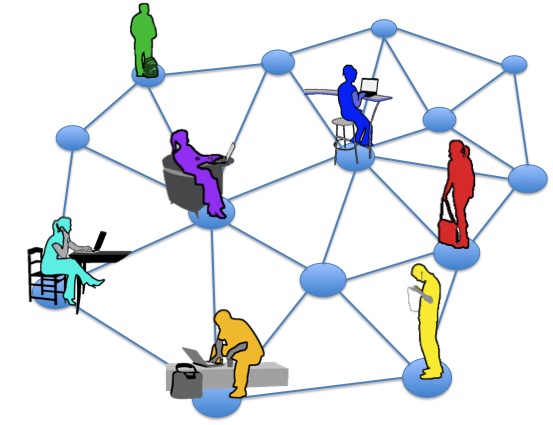Asynchronous learning is a student-centered teaching method that uses online learning resources to facilitate information sharing outside the constraints of time and place among a network of people.
Asynchronous learning is based on constructivist theory, a student-centered approach that highlights the importance of peer-to-peer interactions. This approach combines self-study with asynchronous interactions to promote learning, and it can be used to promote learning in traditional on-campus education, distance education, and continuing education. This combined network of learners and the electronic network in which they communicate are referred to as an asynchronous learning network.
To support asynchronous learning, the online learning resources used include email, electronic mailing lists, threaded conferencing systems, online discussion boards, wikis, and blogs. Course management systems such as CampusCruiser LMS, Blackboard, WebCT, Moodle, and Sakai, have been developed to support online interaction, allowing users to organize discussions, post and reply to messages, and upload and access multimedia. These asynchronous forms of communication are sometimes supplemented with synchronous components, including text and voice chat, telephone conversations, videoconferencing, and even meetings in virtual spaces such as Second Life, where discussions can be facilitated among groups of students.
History
The roots of asynchronous learning trace their beginnings to the end of the 19th century, when formalized correspondence education (or distance learning) first took advantage of the postal system to bring physically remote learners into the educational fold. The 1920s and 30s saw the introduction of recorded audio, desynchronizing broadcasting and revolutionizing the mass dissemination of information. The first significant distribution of standardized educational content took place during World War II; the branches of the U.S. military produced hundreds of training films, with screenings numbering in the millions.
Online asynchronous learning began with schools’ and universities’ substantial investment in computer technology in the early 1980s. With seminal applications such as Seymour Papert’s Logo (programming language), students were able to learn at their own pace, free from the synchronous constraints of a classroom lecture. As computers entered more households and schools began connecting to the nascent Internet, asynchronous learning networks began to take shape. These networks supplemented existing classroom learning and led to a new correspondence model for solitary learners.
Using the Web, students could access resources online and communicate asynchronously using email and discussion boards. The 1990s saw the arrival of the first telecampuses, with universities providing courses and entire degree plans through a combination of synchronous and asynchronous online instruction. Today, advanced multimedia and interactivity have improved the utility of asynchronous learning networks and blurred the divide between content-creator and content-consumer. New tools like class blogs and wikis are creating ever-richer opportunities for further asynchronous interaction and learning.

